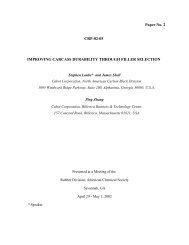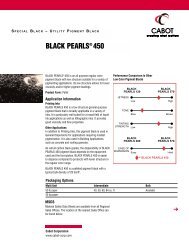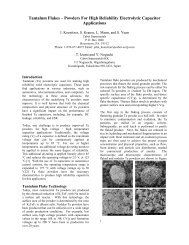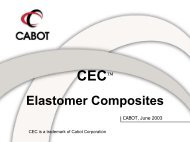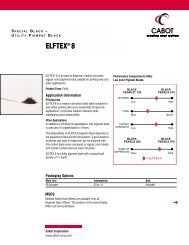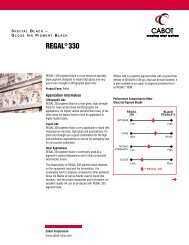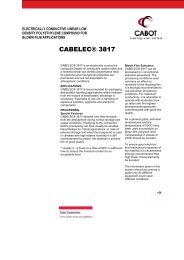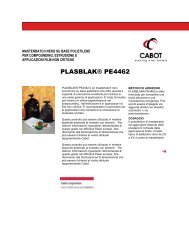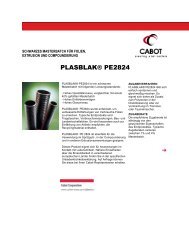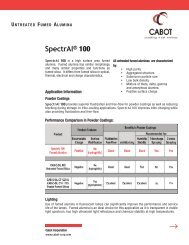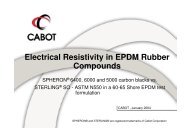UV Weathering and Related Test Methods - Cabot Corporation
UV Weathering and Related Test Methods - Cabot Corporation
UV Weathering and Related Test Methods - Cabot Corporation
Create successful ePaper yourself
Turn your PDF publications into a flip-book with our unique Google optimized e-Paper software.
6<br />
Light stabilizers for plastic materials<br />
To provide an appropriate protection against <strong>UV</strong> radiation, several stabilizing systems can be utilized in plastic materials.<br />
The most important types of light stabilizers are Ultraviolet Light Absorbers, Energy Transfer Agents or Quenchers, as<br />
well as Hindered Amine Light Stabilizers. A brief description of these different light stabilizers is given below.<br />
a) <strong>UV</strong> light absorbers<br />
Absorbers convert harmful ultraviolet radiation to harmless infrared<br />
radiation or thermal energy, which is dissipated through the polymer<br />
matrix. They can be either transparent as hydroxybenzophenone or<br />
opaque like carbon black.<br />
Carbon black<br />
Carbon black is one the most efficient <strong>and</strong> widespread light<br />
absorbers. Its efficiency as a <strong>UV</strong> absorber depends primarily on the<br />
primary particle size <strong>and</strong> structure. At the same loading, carbon black<br />
aggregates based on fine prime particles will present more surface to<br />
incident light - <strong>and</strong> hence a larger ultraviolet light absorbing efficiency<br />
- than a coarser grade.<br />
Primary particle<br />
Carbon black aggregate<br />
Primary particle size<br />
(typically 15 to 60 nanometers)<br />
Effect of primary particle size on weathering performance<br />
%RE at break<br />
125<br />
100<br />
75<br />
50<br />
25<br />
0<br />
Accelerated <strong>Weathering</strong> – ATLAS<br />
55 µm LDPE films with 2.5% CB<br />
0 250 500 750 1000 1250<br />
Exposure time (hours)<br />
The appropriate loading level depends on the part thickness, exposure<br />
conditions <strong>and</strong> type of carbon black. Usual loadings to impart<br />
optimum <strong>UV</strong> protection vary between 2 <strong>and</strong> 3% (it should be noted<br />
that these carbon black levels correspond to 4 to 7% masterbatch,<br />
depending on their loading).<br />
< 25 nm particle size<br />
60 nm particle size



